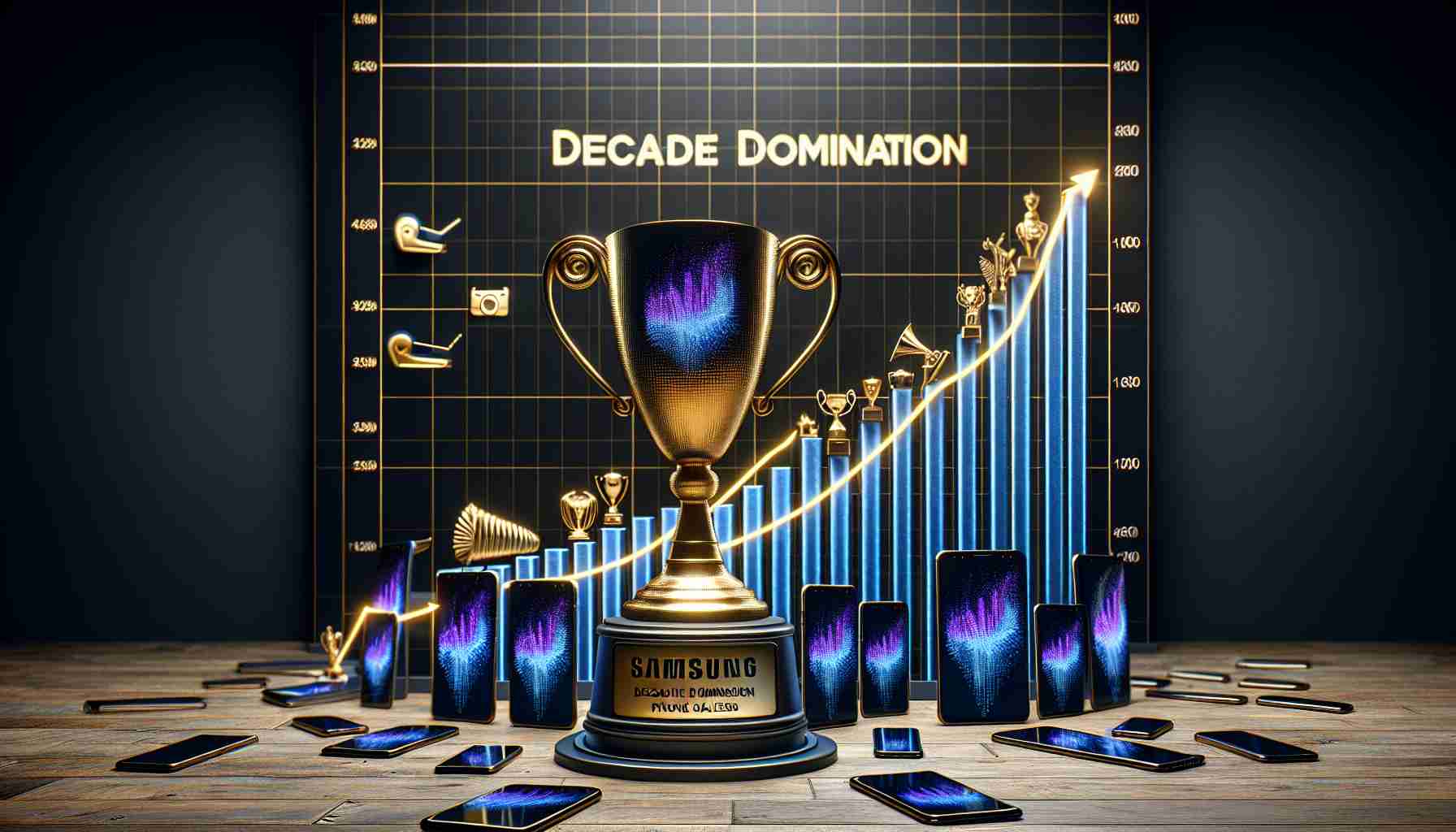Mobile Market Shares Revealed Over a Decade
The competitive landscape of the smartphone market remains as dynamic as ever. In a recent disclosure of market data, Samsung has emerged ahead of Apple in the first quarter of 2024, yet Apple’s iPhone 15 Pro Max leads as the top-selling model.
The renowned market research firm, International Data Corporation (IDC), has compiled a decade’s worth of sales data for titans like Samsung and Apple.
Breaking Down the Decade: Samsung’s Triumph
As per IDC’s comprehensive review spanning from the first quarter of 2014 to the first quarter of 2024, South Korea’s Samsung has achieved staggering sales, approximating 3 billion units over the last ten years. The company has reportedly outsold its closest competitor, Apple, by a 33% margin, with Apple tallying up 2.2 billion phone sales.
The research highlights Samsung’s most successful year in 2015, coinciding with the launch of Galaxy S6 and Note 5, where they sold 320.9 million devices. Apple, in the same year, managed to sell 231.5 million phones. Conversely, Samsung’s toughest year was recorded in 2022, with sales at 258.2 million, while Apple maintained a sale count of 225.3 million.
Decade’s Sales Rankings
Despite these figures, it’s essential to consider the differing strategies of both companies, with Samsung offering a wide array of devices annually across multiple segments, in contrast to Apple’s more focused release of flagship models. Nevertheless, Apple’s performance reflects a strong market position, highlighting that the fierce rivalry persists.
IDC data further reveals that Samsung’s sales outpace the collective performance of other competitors such as Xiaomi, vivo, and Huawei. Xiaomi trails behind as the third-leading brand with sales reaching 1.1 billion over the last decade. The top five phone-selling brands of the decade stand as:
– Samsung – 2.93 billion
– Apple – 2.2 billion
– Xiaomi – 1.14 billion
– OPPO – 911.9 million
– vivo – 526.6 million
This comprehensive data captures the ebb and flow of a rapidly evolving industry, one where brand leadership is contingent on a blend of innovation, consumer loyalty, and strategic foresight.
Key Questions and Answers:
– What factors have contributed to Samsung’s dominance in phone sales?
Samsung’s dominance could be attributed to its broad product range, appealing to various market segments. Furthermore, their emphasis on innovation, effective supply chain management, strategic pricing, and wide distribution channels contribute to their leadership position.
– How has Apple managed to maintain a strong market position despite selling fewer units than Samsung?
Apple maintains a strong market position through brand loyalty, high customer satisfaction, consistent quality across fewer models, a strong ecosystem that locks users into their products, and a focus on high-profit margin flagship phones.
– What challenges have Samsung and Apple faced in maintaining their market shares?
Challenges include the saturation of the smartphone market, intense competition from Chinese manufacturers, maintaining innovation and consumer interest in newer models, and navigating global trade uncertainties and supply chain disruptions.
– What controversies are associated with smartphone market leaders like Samsung and Apple?
Controversies include concerns over labor practices in manufacturing facilities, environmental impact, patent infringement lawsuits, and issues related to user privacy and data security.
Advantages and Disadvantages:
– Advantages of Samsung’s Strategy:
* Offers a diverse range of products at varying price points
* Strong presence in emerging markets
* Rapid adaptation to market trends and consumer needs
– Disadvantages of Samsung’s Strategy:
* Product saturation may dilute brand value
* High competition in mid-range and low-end markets may erode profit margins
– Advantages of Apple’s Strategy:
* Strong brand identity and loyalty
* High-profit margins due to focus on premium products
* Comprehensive ecosystem that encourages customer retention
– Disadvantages of Apple’s Strategy:
* Limited range of products, potentially missing out on wider market segments
* Heavy reliance on a few models may increase risk if a particular model fails to perform well
To learn more about Samsung and Apple, as well as insights into the smartphone market, you can visit the following links:
– Samsung Official Website
– Apple Official Website
– IDC Official Website
The above links provide access to information about the companies’ latest products, corporate news, and market research that may offer additional insights into their decade-long competition and current market dynamics.
The source of the article is from the blog myshopsguide.com
